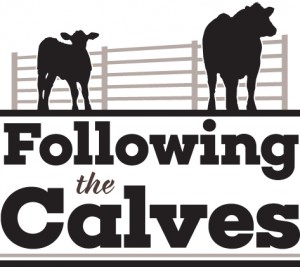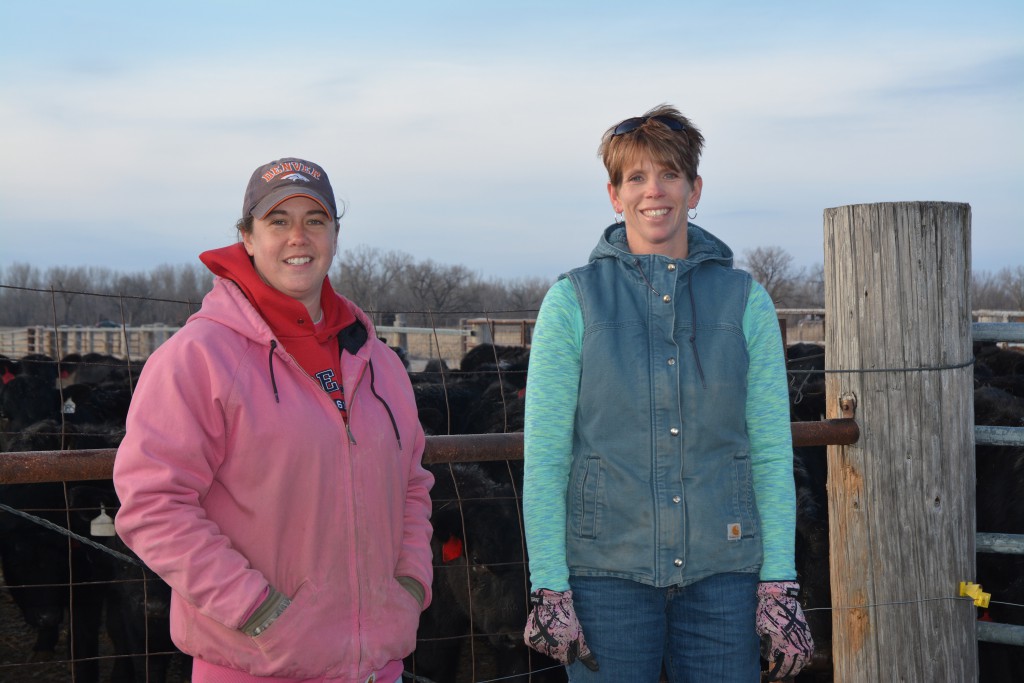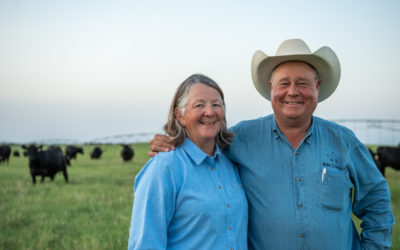Following the Calves: Decisions, decisions
 “We’re going to sell them all.”
“We’re going to sell them all.”
I could hear it in Virginia Evert’s voice. She hated to say that. After all, she and cousin-in-law Rachael spent nearly a year with those heifers, from calving to weaning and developing.
Much longer if you consider the genetic decisions and investments in herd improvement.
“All the old-timers say, ‘Save when they’re low and sell when they’re high,’” Virginia says. Even after last fall’s price drop, the market is still relatively strong.
Anne Burkholder had room in the yard and interest in buying the other half of the calf crop.

“If they’re not saving any we’re not saving any,” Brandon says. Management is simplified by decisions made in tandem. An outsider might never know ownership is held separately.
Following the 2002 wild fire, their herd rebuilding was so aggressive the criteria for saving a female was that it was female. (Ok, there was a little more to it than that, but basically they were saving everything they could to increase numbers.)
“The first few years, we’d go out the morning of sale day and pick the heifers we liked best that day,” Virginia says.
Now they wean the heifers at Rachael’s parents’ place. Keeping them into January gives them more confidence.
“Then we are able to relook at who we like at that point in time,” Virginia says. Daughters that are the product of AI have a better chance, the odds are less favorable for those born to unfriendly mamas.
But they all get the benefit of better nutrition in front of them. Pat Laird of Laird Feed in Gothenburg, Neb., provides advice on weaning rations and cow mineral programs.
“We analyze everything to determine, ‘Is it the best money spent?’” he says. Pat takes a look at the available resources, calculates the quality and quantity of home-grown forage and then develops a plan.
The fact that he’s a fellow producer who also sends calves to Will Feed just sweetens the deal. He has firsthand knowledge.
“The transition from mama to the feedlot needs to be as smooth as possible,” Pat says, noting that they all use Avail-4 mineral and have paid more attention to whole-herd nutrition in the last several years.
“They’re smart producers. They realized it benefited everything from conception to cow health and calf health,” Pat says. “It makes sense. That cow is not only nursing, but developing a fetus, too.”
She could also be developing the next generation of Evert cows.
But not this year.
Anne reports the Evert heifers have come up on feed and have adjusted nicely to the feedyard. Calving season is “on” and the cycle continues. Next time we’ll check in on the new beginnings at the ranch, while the feeder animals near the finish line.
May your bottom line be filled with black ink,
Miranda
Catch up on the rest of the Evert family’s story with these posts:
- Everything Evert
- A success story in the making
- The herd-changer
- Decisions, decisions
- Relishing the routine
Our “Following the calves” series will also take you to Arizona and Florida in these posts:
- Following the calves
- A Florida weaning
- Florida calves backgrounded
- Florida cattle head to harvest
- High quality from the high desert
- 86% CAB and Prime: “still OK”
- Gearing up for spring in AZ
You may also like
Progress, Not Perfection
It’s a labor of love, obvious in the way she lights up explaining their family’s 33-year effort to proactively adapt Angus cows to their land. A lifetime of telling stories from the pasture or kitchen has resonated with nonfarm consumers as much as fellow ranchers. “Everything we do is about cattle, but it’s also about family and connecting our kids to the land and to the cattle,” Debbie Lyons-Blythe says.
Bradley 3 Ranch earns Certified Angus Beef Sustainability Award
Before there were fences and farms in the Panhandle, stirrup high grasses owned the land. With time, they have dwindled to near extinction. And with time again, they’re resurrecting. Nothing is a one-year thought process. Just like building a fence, they determine whether their decisions will last the next 50 years.
Progress from small steps
Every day is a chance to learn and get better. Thousands of others like my new friends in Alabama are taking steps to meet the shifts in consumer demand, and to know more. Small steps in the right direction can start now. Even if it’s just recording a snapshot of where you are today, a benchmark for tomorrow.





